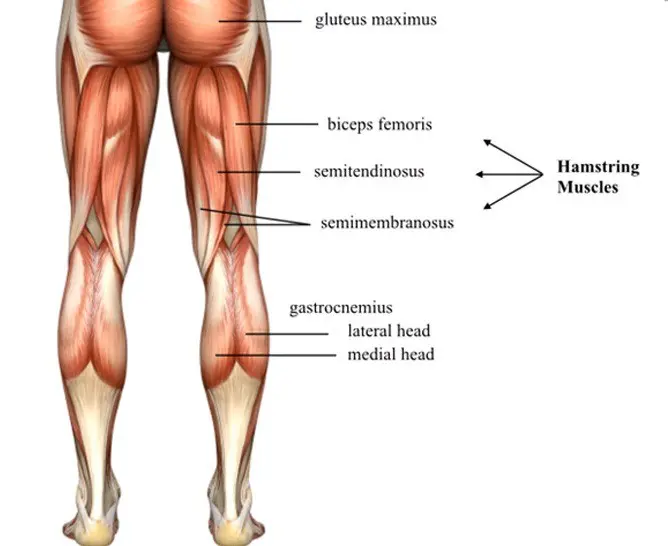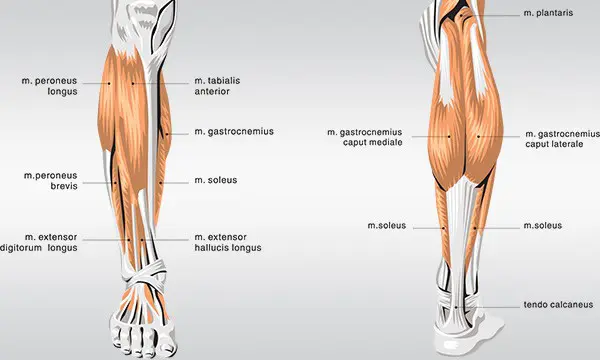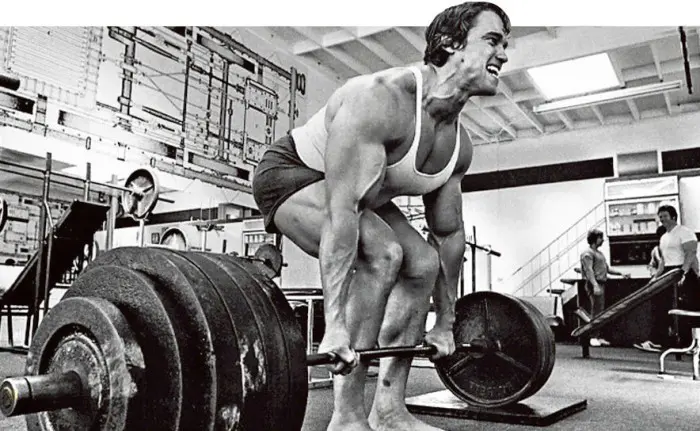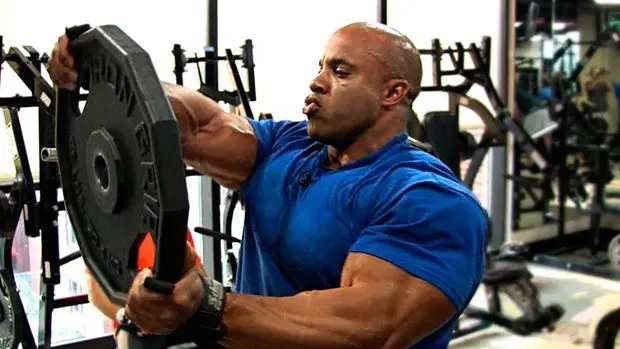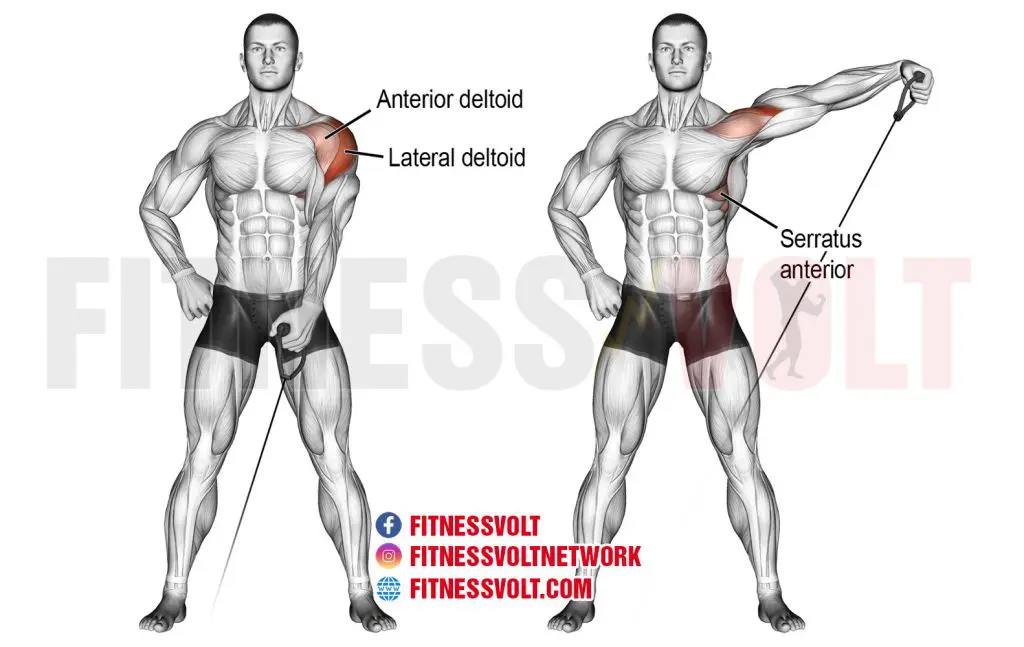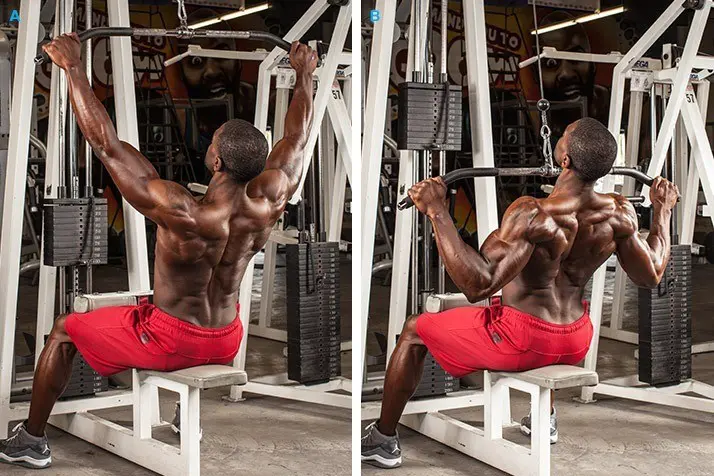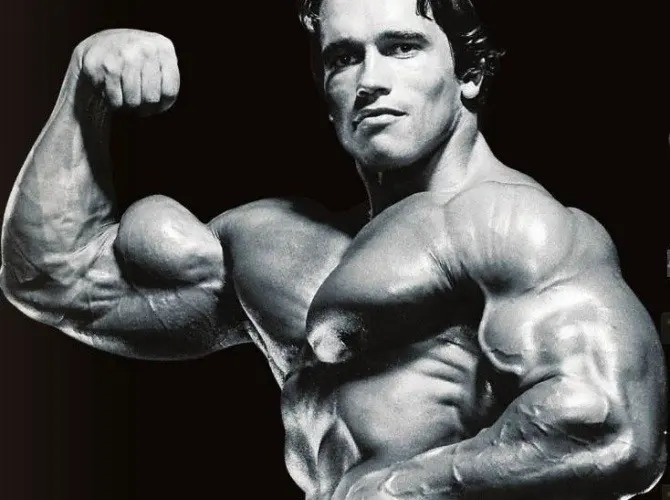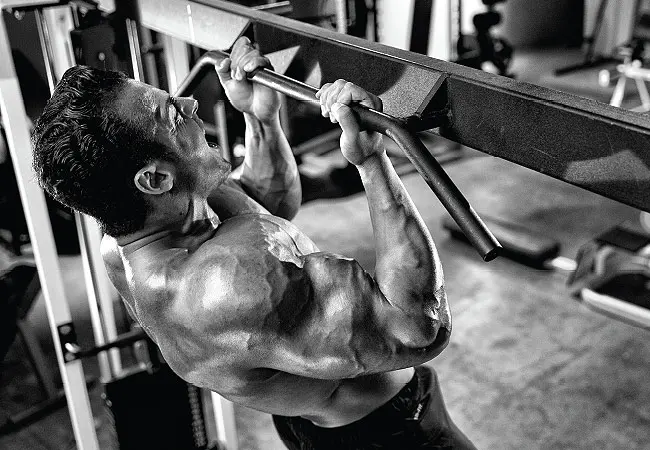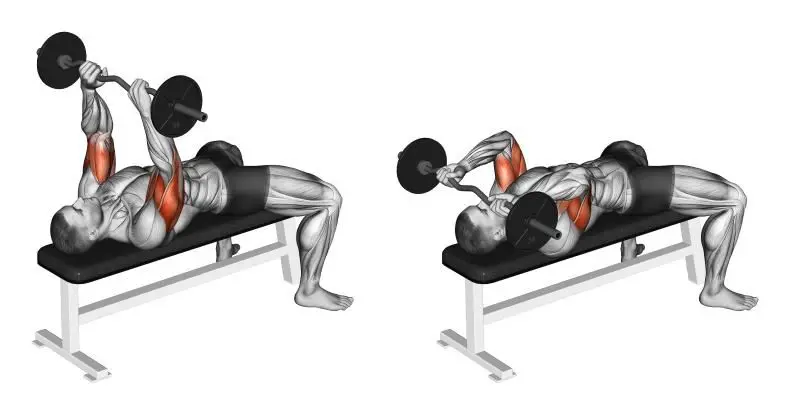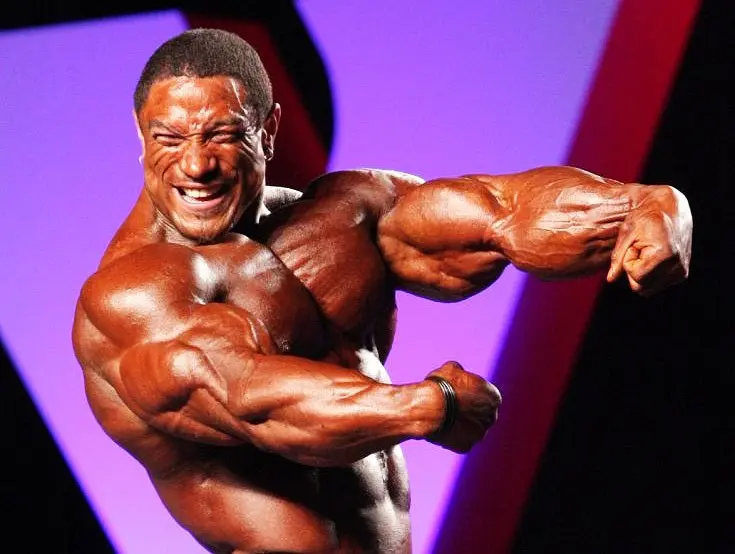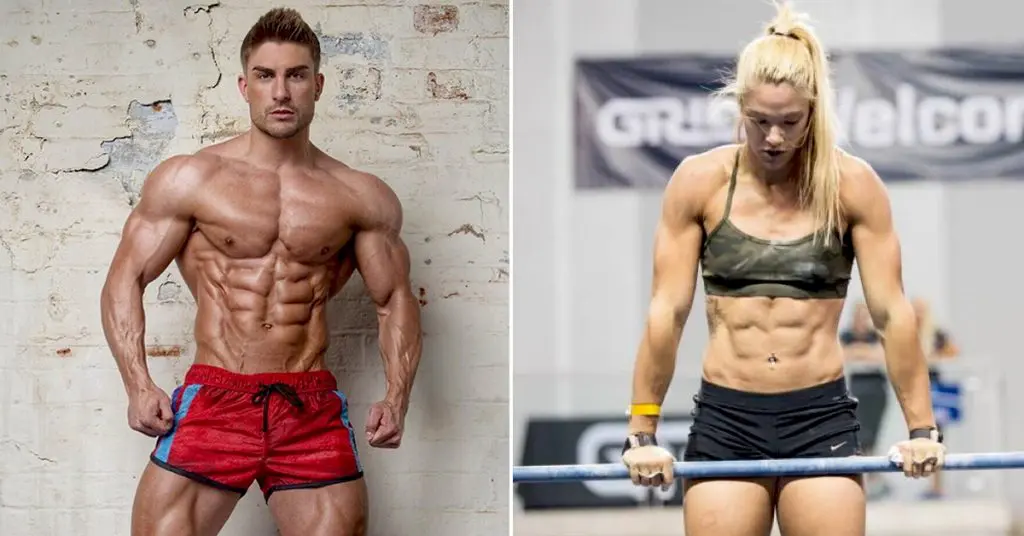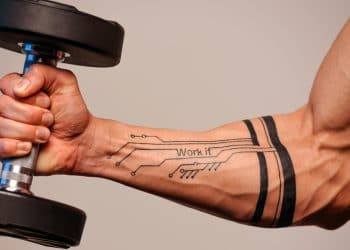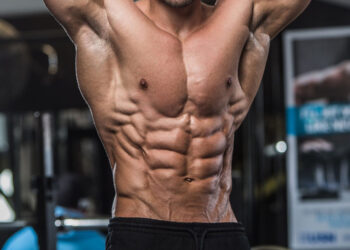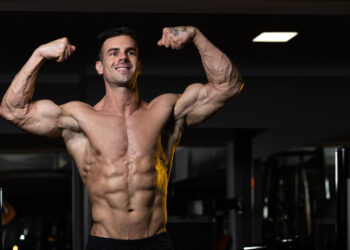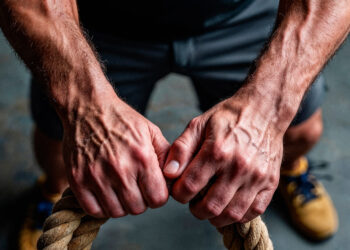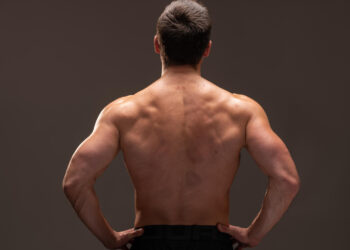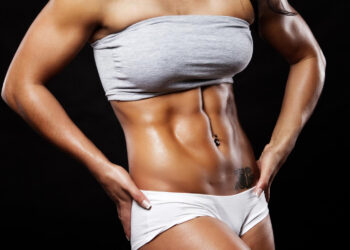Your training time and energy are incredibly valuable. They’re limited resources too. Don’t waste them on unproductive workouts and ineffective exercises. Instead, treat your time and energy like money, and learn to spend them wisely.
First of all, that means adopting a well-designed workout split that provides a good balance between the demands of training and your need for recovery. After all, training takes a lot out of your body, and you only grow and get stronger when you rest.
Once you’ve chosen your split, you need to fill it with the best exercises for your goal/s. In a lot of cases, the best exercises are also the hardest, and they are the ones most likely to trigger an adaptive response. When it comes to building strength and size, easy rarely works.
Finally, adopt the right rep range for the type of training you do. The commonly accepted rep ranges by training goal are:
- Strength and power – 1-5 reps, resting 3-5 minutes between sets
- Hypertrophy (muscle growth) – 6-12 reps, 60-90 seconds between sets
- Endurance – 13-20 reps, 30-60 seconds between sets
Not sure which are the best exercises for muscle size and strength? Relax; we’ve got you covered! Just build your workouts around these proven movements, all laid out by muscle group.
Quadriceps
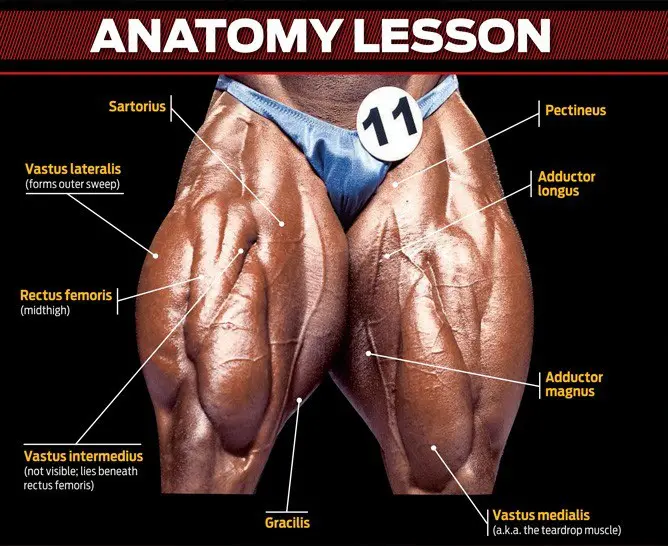
Located on the front of your thighs, the primary role of your quads is knee extension. Big quads add a lot to your physique, but they can be a hard muscle to build.
Level Up Your Fitness: Join our 💪 strong community in Fitness Volt Newsletter. Get daily inspiration, expert-backed workouts, nutrition tips, the latest in strength sports, and the support you need to reach your goals. Subscribe for free!
That’s because they are a) very strong, and b) use a lot of energy. Because of this, there is no such thing as an easy quads workout! Build bigger, more muscular legs with these three exercises.
1– Front Squats
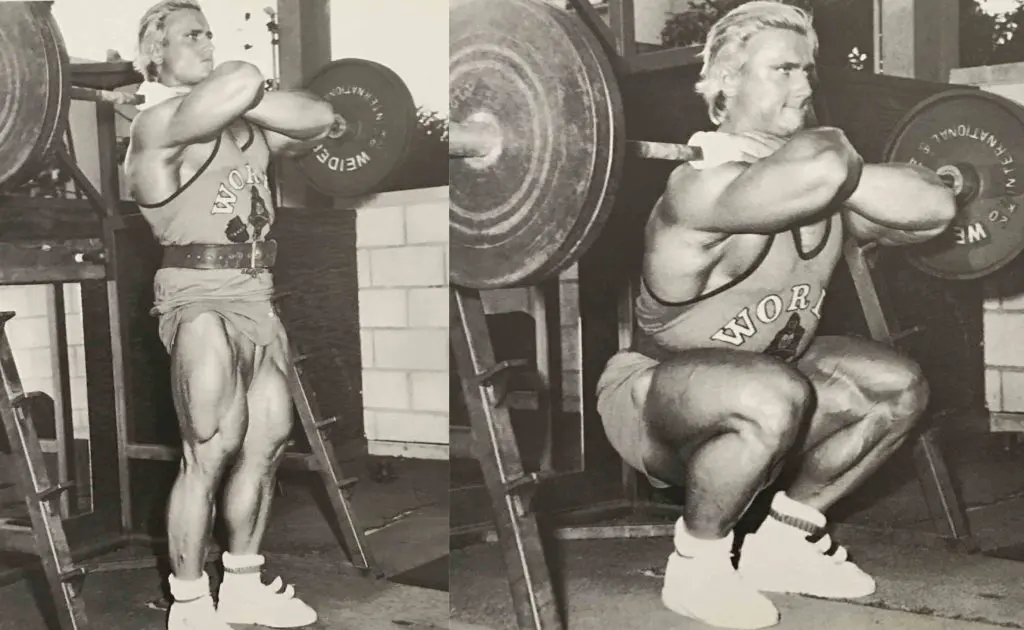
Front squats allow you to keep your torso more upright than back squats. This reduces glute and hamstring involvement while increasing quad activation. If you want to sculpt bigger thighs, this is the exercise to use.
How to do it:
- Rack and hold a barbell across the front of your shoulders. Your upper arms should be parallel to the floor. Stand with your feet about shoulder-width apart.
- Bend your knees and squat down as deep as your flexibility and knee-health allow. Do not round your lower back.
- Stand back up and repeat.
- Make this exercise even more quad-centric by wearing Olympic weightlifting shoes or placing your heels on small weight plates or blocks. Note: this may also increase strain on your knees.
2– Hack Squats
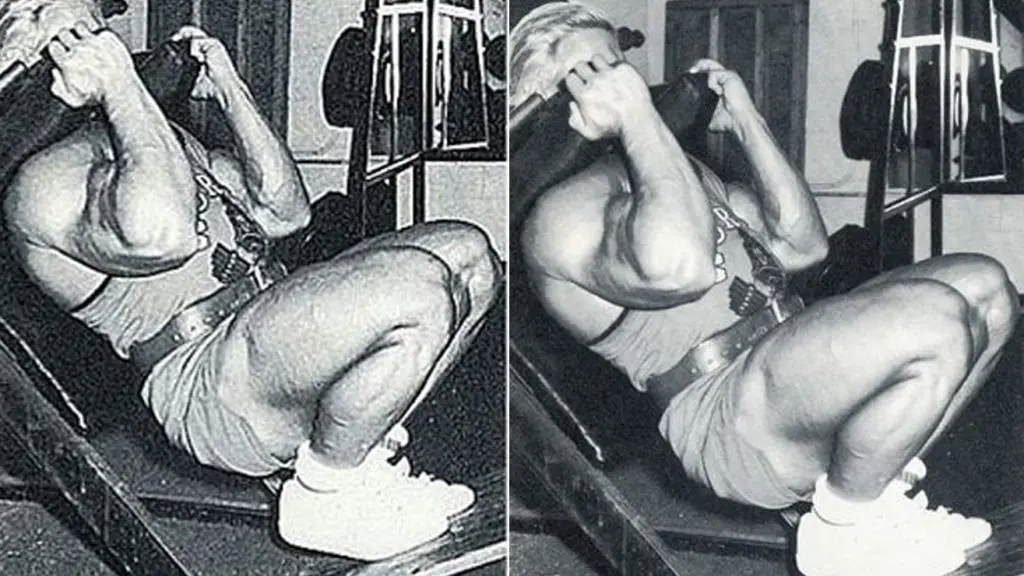
Hack squats all-but eliminate your glutes and hamstrings from this compound lower body exercise. This makes it a very powerful quads exercise. Be warned, some people also find this exercise hard on the knees.
How to do it:
- Get into the machine and place your shoulders under the pads and lean against the backrest. Position your feet, so they are slightly out in front of you.
- Brace your abs, unrack the weight, and bend your knees. Descend as far as your flexibility allows.
- Stand back up and repeat.
- Do not let your knees travel beyond the ends of your toes, as this could lead to joint pain or injury.
3– Bulgarian Split Squats
No barbells or machines? No problem! You can build massive quads using nothing more than a pair of dumbbells and an exercise bench. Better still, this exercise works one leg at a time, so you can make sure you work both sides equally.
How to do it:
- Stand with your back to a knee-high exercise bench. Bend one leg and place your foot on the top of the bench behind you.
- Move your front foot forward and into a split stance.
- With a dumbbell in each hand, bend your legs and lower your rear knee down toward the floor. Keep your front knee behind your toes.
- Drive upward through the heel/midfoot of your front foot and repeat.
- Do the same number of reps on each leg.
- You can also do this exercise with a barbell across your upper back instead of holding dumbbells.
Hamstrings and Glutes
While the hamstrings and glutes are separate muscles, they work together so often that it makes sense to train them together, most of the time, at least. Your hamstrings are located on the back of your thigh, and your glutes are on the back of your hips and are basically your butt. Together, they drive your leg backward, and your hamstrings are also responsible for knee flexion.
1– Romanian Deadlift
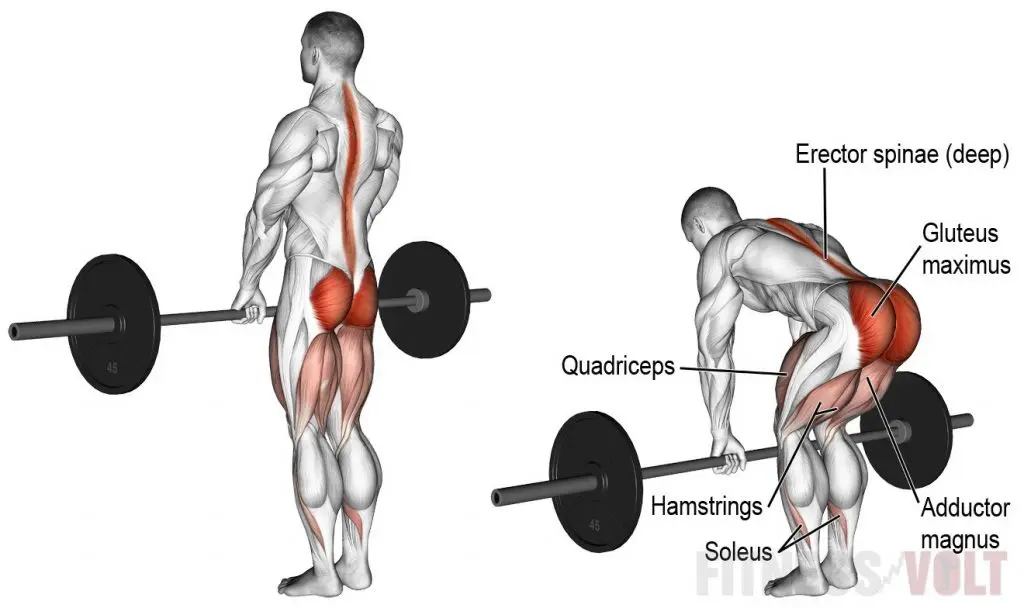
Also known as stiff-legged deadlifts, this exercise works your glutes and hamstrings alongside your lower back. As such, Romanian deadlifts are an excellent assistance exercise for conventional deadlifts.
How to do it:
- Hold a barbell with a shoulder-width overhand or mixed grip. Stand with your feet about hip-width apart, and the bar across your thighs. Bend your legs slightly, but then keep them stiff for the duration of your set.
- Without rounding your lower back, hinge forward from your hips and lower the weight down the front of your legs until you feel an intense stretch in your hamstrings.
- Stand back up and repeat.
2– Hip Thrusts
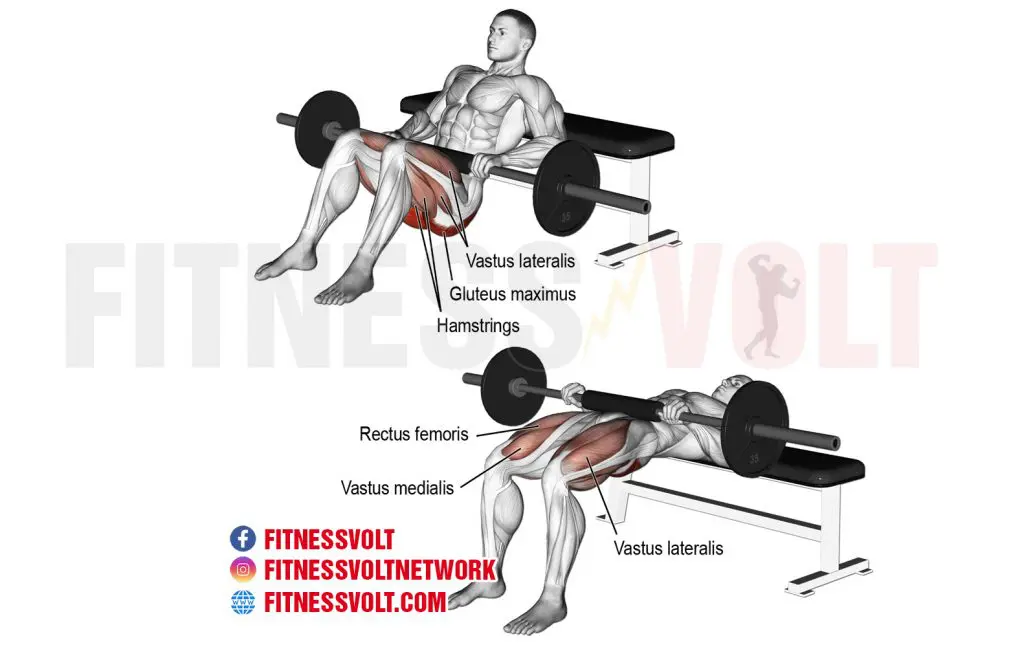
If Romanian deadlifts have a disadvantage, it is that they are hard on your lower back. If your back is tired after conventional deadlifts, or you have a back injury, you may not want to do that particular exercise. Hip thrusts are ideal for those days that you want to work your glutes and hamstrings without hammering your lower back.
How to do it:
- Sit on the floor with your legs bent and your feet flat. Lean your upper back against a sturdy exercise bench. Rest and hold a barbell across your hips.
- Drive your feet into the floor and lift your hips up until your thighs are parallel to the floor.
- Lower your butt back down and repeat.
3– Hamstring Curls
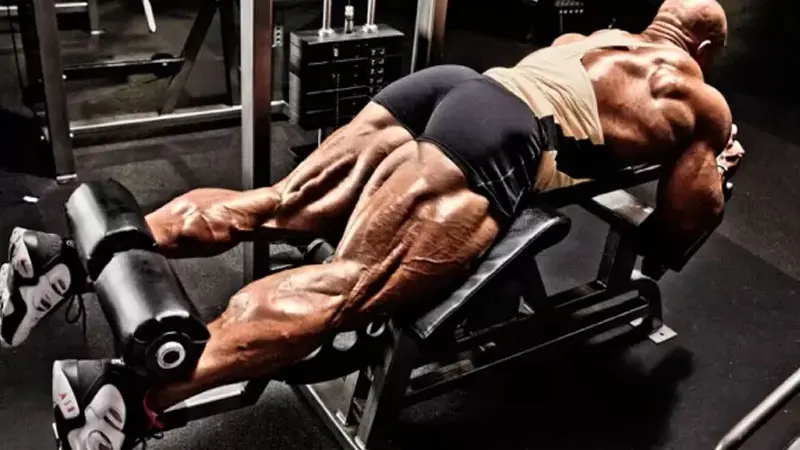
In the same way that you can’t build great arms without biceps curls, you can’t build awesome legs without hamstring curls. While this exercise does not work your glutes, it’s the best way to hit your hammies with laser-like precision, which is why it’s made it onto our list of best exercises.
How to do it:
- Adjust the machine so that your knees are in line with the lever arm pivot point. Move the leg pad, so that it’s across your lower calves.
- Lie face down and grip the handles. Brace your abs and push your hips down – don’t let them rise off the bench.
- Bend your legs and curl your feet up toward your butt. Squeeze your hamstrings at the top of the movement.
- Extend your legs and repeat, but don’t let the weights touch down between reps.
Calves
Your lower leg muscles can add a lot of your overall appearance. Even wearing shorts, your quads and hamstrings are usually out of sight, but your calves will still be on show. Don’t neglect this muscle group. Use these exercises to build calves you can be proud of!
1– Standing Calf Raises
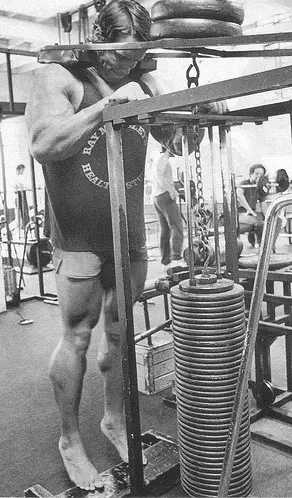
Standing calf raises work both of the muscles that make up your calf complex – the gastrocnemius and the soleus. As such, it’s a very time-efficient exercise that’s also one of the best calf-builders around.
How to do it:
- Place the balls of your feet on the edge of the step, and your shoulders under the pads. Stand up with your core braced and your legs straight. Look straight ahead.
- Lower your heels as far down below your toes as you can – get a really good stretch.
- Next, push up high into your tiptoes.
- Lower your heels and repeat.
- No calf raise machine at your gym? You can also do this exercise using a Smith machine and a block to stand on.
2– Donkey Calf Raises
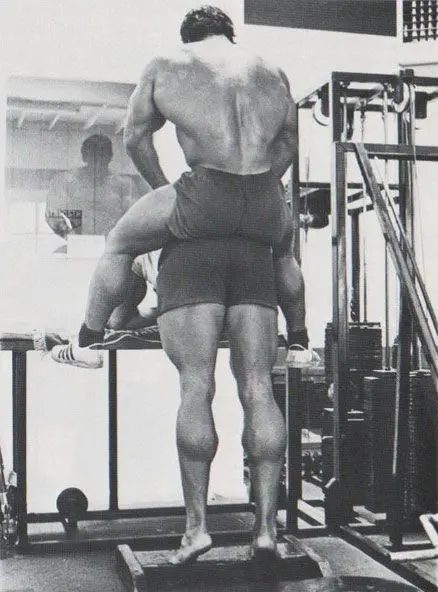
This old-school calf exercise might raise a few eyebrows in the gym, but it’s a superb exercise for building massive calves. And, other than a step to stand on, all you need is a willing training partner.
How to do it:
- Stand on the edge of a sturdy step and then lean forward, bracing your weight on your arms. Get your partner to sit astride your hips and not on your lower back.
- Lower your heels down as far as you can and then push up onto your tiptoes.
- If you are very strong, you may need more than one partner for this exercise.
3– Seated Calf Raises
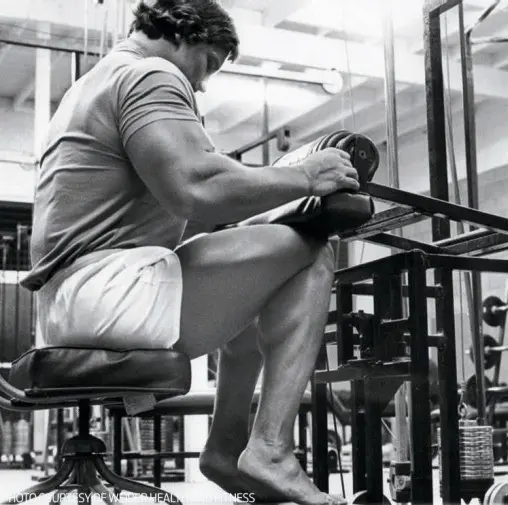
This exercise emphasizes the soleus, which is your lowermost calf muscle. The soleus is involved in all calf exercises, as it works alongside the more prominent gastrocnemius. But, if you want to beef up your lower calves, this is the exercise to do it.
How to do it:
- Sit on the calf raise machine with the balls of your feet on the edge of the step and the leg pad across your lower thighs. Your shins should be vertical.
- Lower your heels down toward the floor as far as your flexibility allows, and then push up onto your tiptoes.
- Do not lean back – that just makes this exercise easier. Instead, keep your upper body stationary to make sure your calves do all the work.
Pectoralis Major
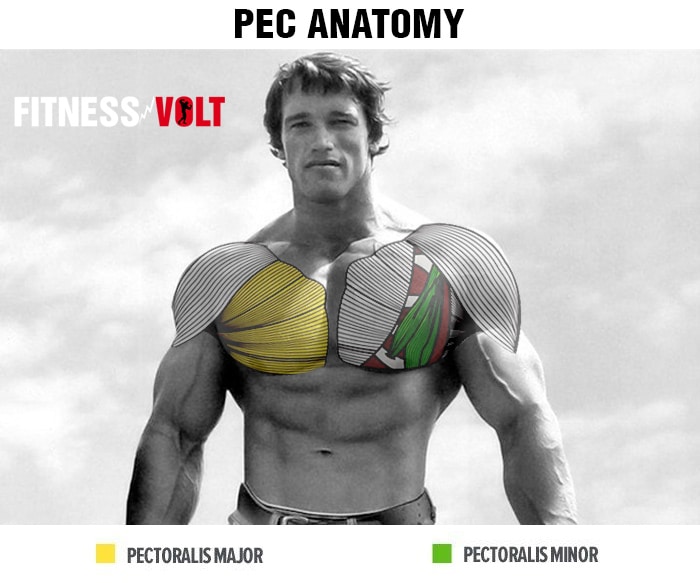
Known as your pecs for short, this muscle is arguably one of the most popular muscles to train. After all, who doesn’t love chest day? Build bigger, stronger pecs with these proven chest exercises.
1– Incline Dumbbell Bench Presses
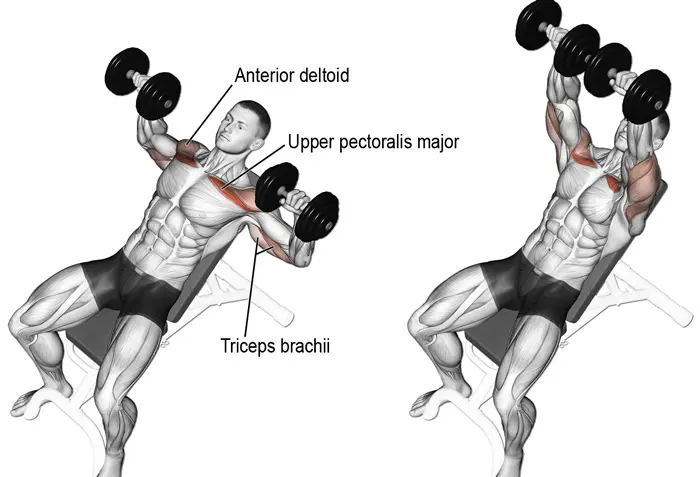
Of all the exercises you can do for your chest, this is probably the best. The incline angle means you hit your mid and upper chest really hard, and using dumbbells provides your pecs with a deep, muscle-building stretch. Pec exercises don’t come much better than this.
How to do it:
- Set your bench to a 20 to 30-degree incline. Grab a dumbbell and lie on your bench with your head uppermost. Hold the weights up and over your shoulders with your palms facing away from you. Brace your abs and pull your shoulders down and back for stability.
- Bend your arms and lower the weights down your armpits. Get a good stretch, but do not hyperextend your shoulders.
- Push the weights up to arms’ length and repeat.
2– Barbell Bench Press
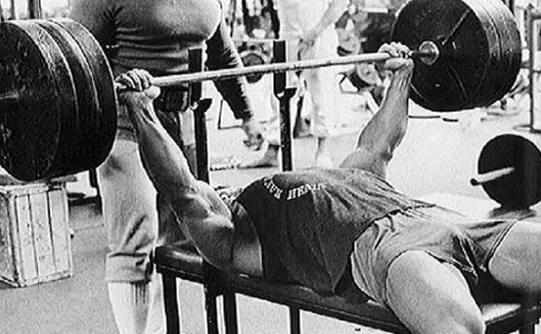
The barbell bench press is one of the most popular exercises on the planet. Bodybuilders do it to build massive pecs, and it’s also one of the three lifts contested in the sport of powerlifting. Whether you want to build chest size or strength, the barbell bench press deserves to be part of your program.
How to do it:
- Lie on the bench, so your eyes are directly below the bar. Reach up and grab it with an overhand, wider than shoulder-width grip. Plant your feet firmly on the floor, arch your lower back slightly, and lift your chest up toward the bar. Pull your shoulders down and back and brace your abs.
- Unrack the bar and hold it over your chest. Bend your arms and lower the bar down until it lightly touches your sternum. Do not bounce!
- Press the bar back up and repeat.
- Using a wider grip may increase pec activation, although some lifters find that it’s also harder on their shoulders.
3– Push-ups

The humble push-up might seem like an odd choice for this list of best pec exercises, but it’s a handy option for those days you can’t make it to the gym. It involves the same movement as barbell and dumbbell bench presses, but you don’t need any equipment to do it. Build your pecs the old-fashioned way with push-ups!
- Squat down and place your hands flat on the floor, a little wider than shoulder-width apart, and your fingers pointing forward. Walk your feet back, so your body is straight. Brace your abs.
- Bend your arms and lower your chest down to within an inch of the floor. Do not drop or raise your hips out of alignment.
- Push yourself back up and repeat.
- Make this exercise more challenging by raising your feet or wearing a weighted vest.
Latissimus Dorsi
The latissimus dorsi muscle, or lats for short, is unique. It’s a back muscle that, when well developed, is also visible from the front. Looking not unlike a pair of muscular wings, big lats are a standout muscle that deserves to be prioritized in your workouts – if you want to look awesome, that is!
1– Pull-ups
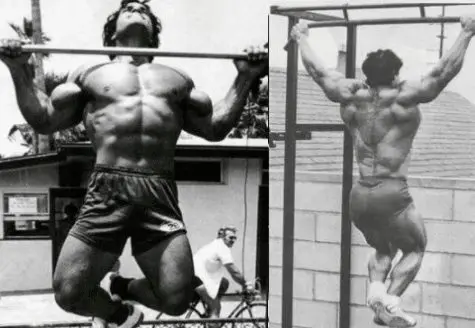
Pull-ups aren’t easy, but that’s what makes them such a good lat builder. They might just be a bodyweight exercise, but, for most lifters, that’s all the resistance you need to build your back. Lat pulldowns are okay, but if you are serious about increasing lat size, pull-ups should be your go-to exercise.
How to do it:
- Hold a bar with an overhand, wider than shoulder-width grip. Hang with your arms straight, feet clear of the floor, and shoulders pulled down and back.
- Without swinging or kicking, bend your arms and pull your chin up and over the bar.
- Lower yourself back down and, without bouncing or relaxing your shoulders, repeat.
- Make this exercise more challenging by wearing a weighted vest or chin/dip belt.
2– Single Arm Bent Over Rows
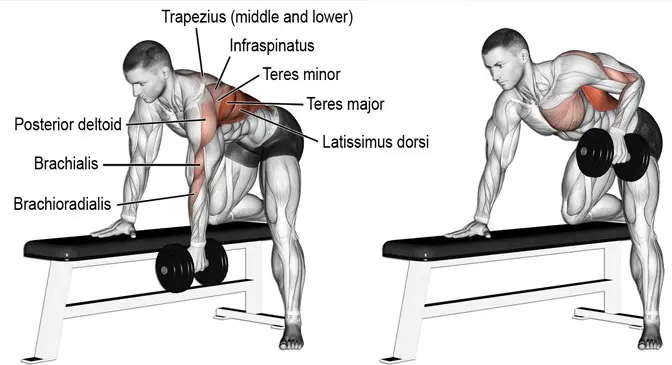
All rowing movements are useful for building bigger lats, but single-arm rows are especially useful. Using one arm at a time, you can use your non-working arm to support your lower back, leaving you free to focus on pumping out the reps. You can also use a slightly bigger range of motion, which is good for hypertrophy. If you want your back to grow, you gotta row!
How to do it:
- Hold a dumbbell in one hand. Lean forward and place your opposite hand on a bench for support. Brace your abs, pull your shoulder down and back, and bend your knees slightly. Do not round your lower back.
- With your hand in a neutral position, bend your arm and pull the weight up and into your ribs. Lead with your elbow and keep your wrist straight.
- Extend your arm and repeat.
- You can also do this exercise with one knee resting on the bench.
3– Deadlifts
Deadlifts might look like a leg and lower back exercise, but they’re actually very effective lat builders too. You have to use your lats to stop the bar swinging out and away from you. For that reason, deadlifts are the cornerstone of many back-building workouts. They’re also one of the best total body mass and strength exercises around.
How to do it:
- Place your barbell on the floor and stand with your toes beneath it, about hip-width apart.
- Bend down and grab the bar with an overhand or mixed grip. Straighten your arms, lift your chest, brace your abs, and arch your back. Your hips should be lower than your knees.
- Without rounding your lower back, stand up, keeping the bar close to your legs. Stand fully upright, but don’t lean back at the top.
- Push your hips back, bend your knees, and lower the weight back to the floor. Reset your starting position and repeat.
Deltoids
The deltoids are a complex body part made up of three heads. There’s the front or anterior deltoid, the medial or side deltoid, and the posterior or rear deltoid. While all three work together, they can also be emphasized individually. So, for this section, we’re going to provide you with one total deltoid exercise plus one each for the individual heads.
1– Seated Dumbbell Shoulder Press
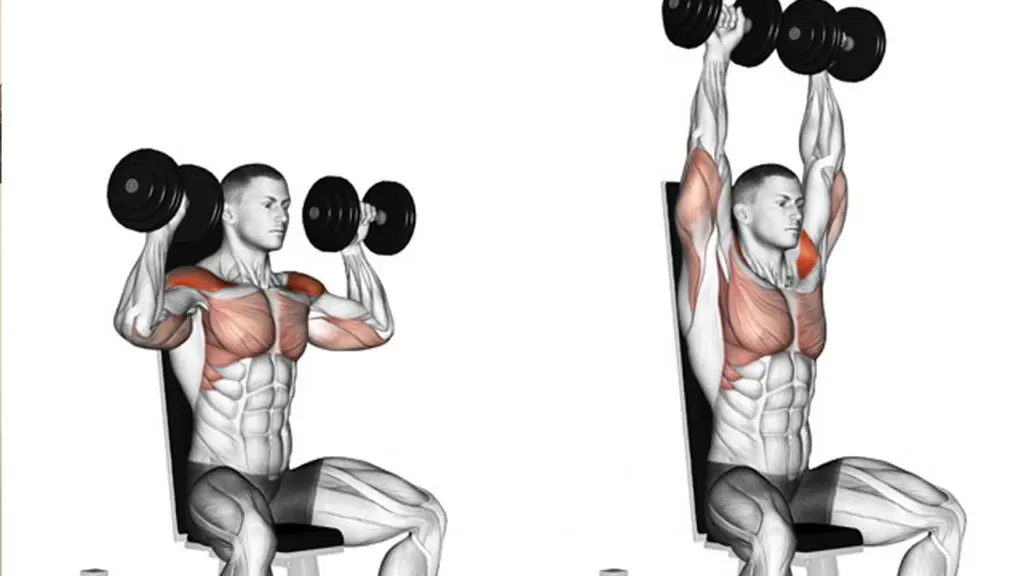
All overhead pressing exercises work your deltoids, but this version is arguably the best of the lot. Using dumbbells means you’ll have to work extra hard to keep the weights stable, increasing deltoid activation in the process. Doing them seated means you can’t use your legs to cheat the weight up. Finally, dumbbells allow for an increased range of motion. Long story short, for general deltoid training, overhead dumbbell presses are hard to beat.
How to do it:
- Set the angle on an adjustable bench to 80 to 90-degrees. Sit down with your back against the backrest and your feet firmly planted on the floor. With a dumbbell in each hand, hold the weights at shoulder height, palms facing forward.
- Press the weights up and overhead. They should follow an arc and meet at the top of the movement.
- Lower the weights back to your shoulders and repeat.
2– Front Dumbbell Raises
Level Up Your Fitness: Join our 💪 strong community in Fitness Volt Newsletter. Get daily inspiration, expert-backed workouts, nutrition tips, the latest in strength sports, and the support you need to reach your goals. Subscribe for free!
This deltoid exercise specifically targets the front or anterior deltoid. This deltoid head is heavily used in most chest exercises, so it’s rarely undertrained or underdeveloped. But, if you feel your anterior delts need some extra work, this is the exercise to do it.
How to do it:
- Hold a dumbbell in each hand and stand with your feet shoulder-width apart for balance. The weights should be in front of your legs, palms facing your thighs.
- With a very slight bend in your elbows, raise one weight forward and up to shoulder-height. Lower the dumbbell back down and then do a rep on the opposite side.
- Continue alternating arms for the duration of your set or, if you prefer, you can also raise both arms at the same time.
3 – Cable Lateral Raises
Cable lateral raises target your medial or side deltoid, which is the head responsible for giving your shoulders their width. While you can do this exercise with dumbbells, using cables ensure that there is constant tension on the target muscles, making it a more productive exercise.
How to do it:
- Stand sideways on to a low cable machine fitted with D-handles. Take the handle in the hand furthest away from the machine, so the cable runs in front of your legs. Stand with your knees slightly bent for stability.
- With a slight bend in your elbow, lift your arm up and out to your side to about parallel to the floor.
- Lower your arm back to your side and repeat.
4– Band Pull Aparts
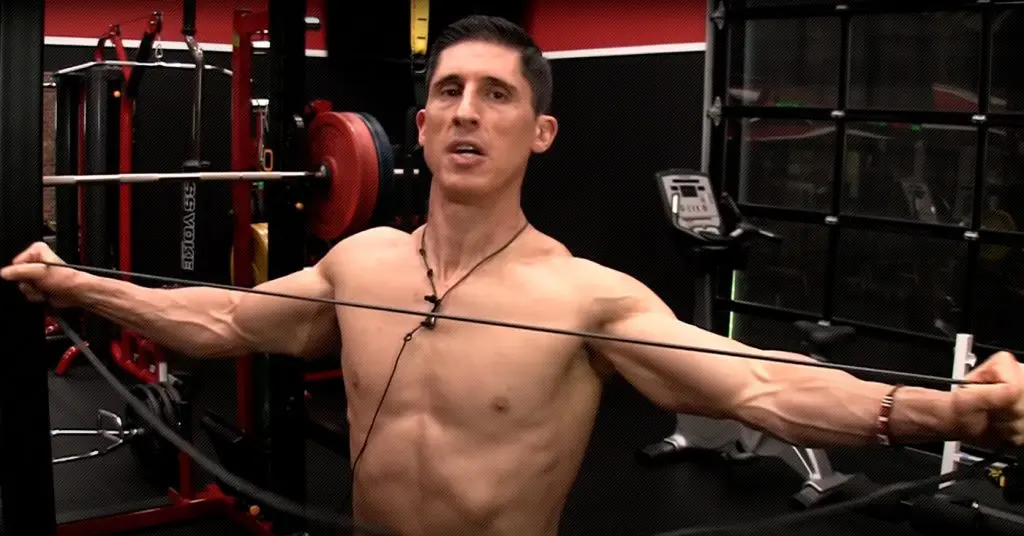
This low-tech exercise targets your posterior deltoids, middle trapezius, and rhomboids. These muscles are essential for shoulder joint health, as well as your posture. Every person who lifts weights should probably do a few sets of this exercise several times a week!
How to do it:
- Hold a resistance band with an overhand, shoulder-width, and raise your arms, so they’re parallel to the floor.
- Open your arms and stretch the band out across your chest, pulling your shoulders down and back as you do so.
- Return to the starting position and repeat.
Trapezius
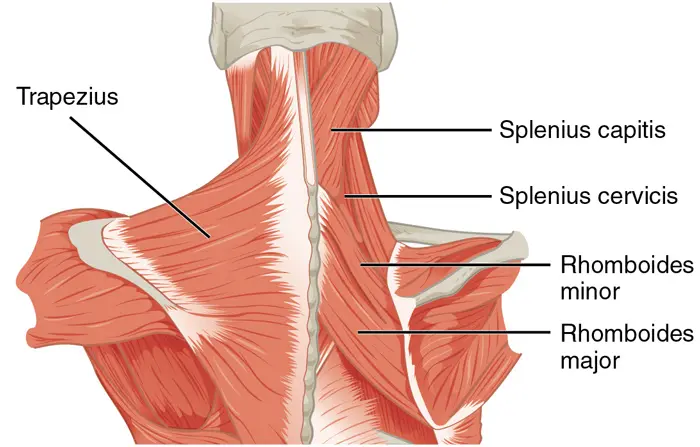
The trapezius or traps is a diamond-shaped muscle on your upper back. Some people like to train it with their shoulders, while others treat it as part of their back. Either way, well-developed traps make you look insanely powerful. There are three parts to the traps – upper, middle, and lower. Because of this, we’ve included one exercise for each one.
1– Dumbbell Shrugs
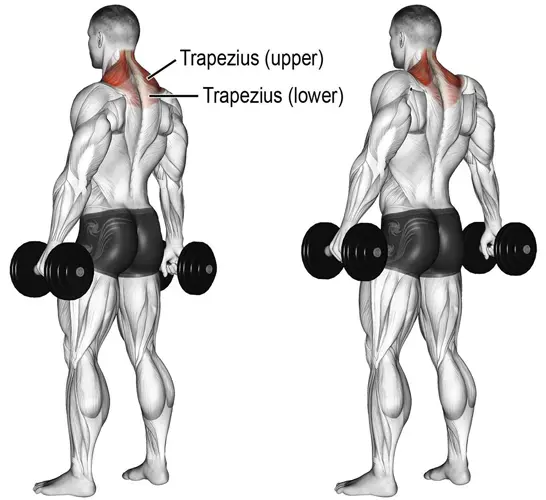
Dumbbell shrugs target your upper traps. When well-developed, this muscle is visible from the front and the back. You can do shrugs with a barbell, but using dumbbells allows for a larger, more natural range of motion, and that’s important for muscle building.
How to do it:
- Hold a dumbbell in each hand, with the weights in front of your thighs. Lean forward about 10-15 degrees.
- Without bending your arms, shrug your shoulders and try to touch them to your ears.
- Lower your shoulders and repeat.
- There is no benefit to rolling your shoulders during this exercise, so just go straight up and down.
2– Bench Shrugs
This move targets your middle traps. Located horizontally across your shoulder blades, this muscle is responsible for pulling your shoulders back and together. As such, it is an important postural muscle, and will also give your upper back some added thickness.
How to do it:
- Lie face down on a slightly inclined exercise bench.
- With a dumbbell in each hand, shrug your shoulders backward, squeezing your shoulder blades together as you do so.
- Relax and repeat.
- You can do this exercise with a barbell if you prefer.
3– Shrug Downs
Not a lot of people train their lower traps. That’s a shame because this is a critical muscle for shoulder health and shoulder girdle stability. Its job is to pull your shoulders downward in a movement called depression. If this muscle is weak, you won’t be able to stabilize your shoulders properly, and that will affect your ability to do pulldowns, pull-ups, dips, and many other exercises.
How to do it:
- On a lat pulldown machine, grab the bar with an overhand, shoulder-width grip and sit down.
- With your arms straight, move your shoulders downward, imaging you are trying to put your scapulae or shoulder blades into your back pockets.
- Lift your shoulders back up and repeat.
Biceps
Biceps, full name biceps brachii, is the most famous muscle in the human body. Ask even a non-gym goer to name a muscle, and they’ll probably know this one! Build arms you can be proud of with the three best biceps exercises around.
1– Barbell Biceps Curls
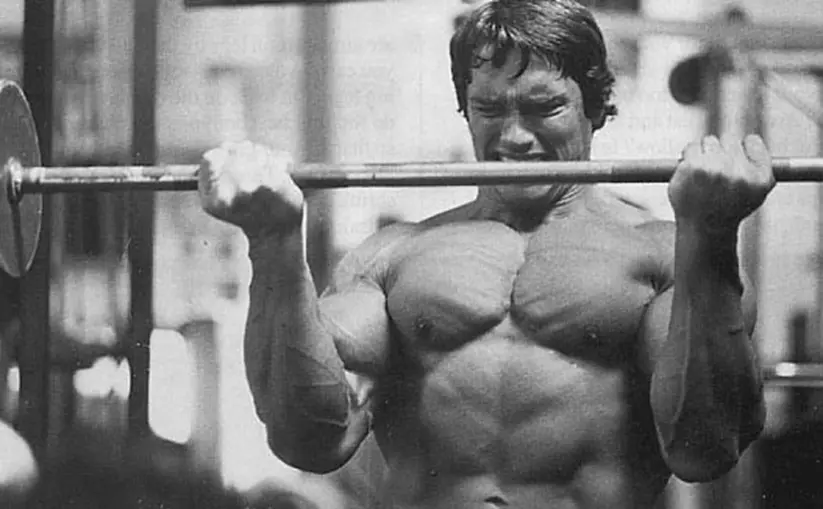
If you want more biceps mass, this is the exercise to do. With your forearms locked into a supinated or palms-up position, barbell biceps curls are probably the best exercise you can do for this crucial muscle group.
How to do it:
- Hold a barbell with an underhand, hip-width grip. Stand with your feet about shoulder-width apart, knees slightly bent for balance. Brace your core and pull your shoulders down and back.
- Without using your back or legs, bend your arms and curl the weight up to shoulder-height. Keep your upper arms close to your sides.
- Lower the bar back down to your thighs and repeat.
2– Dumbbell Preacher Curls
Even if you are careful, it’s all too easy to end up cheating a little when you do standing or even seated biceps curls. This exercise prevents all cheating, as your upper arm is fixed in place by the angled surface of the preacher bench.
How to do it:
- Sit on the preacher bench with a dumbbell in one hand. Rest your upper arm on the angled pad, and use your other arm to hold your body stable.
- Starting with your arm not quite straight, bend your elbow and lift the weight up until your forearm is just short of vertical.
- Lower the weight and repeat.
- Do the same number of reps on each arm.
3– Chin-ups
Wait; aren’t chin-ups a lat exercise? Yes, they are, but they’re also a fantastic biceps exercise. Only, in this movement, you curl your shoulders up to the bar instead of the bar up to your shoulders. This is a very effective arm mass exercise.
How to do it:
- Hold an overhead bar with a hip-width, underhand grip. Hang with your arms straight, shoulders pulled down and back.
- Without swinging or kicking, bend your arms and pull your chin up and over the bar. Pull your elbows down and back as you do so.
- Lower yourself down smoothly and, without bouncing out of the bottom, repeat.
Triceps
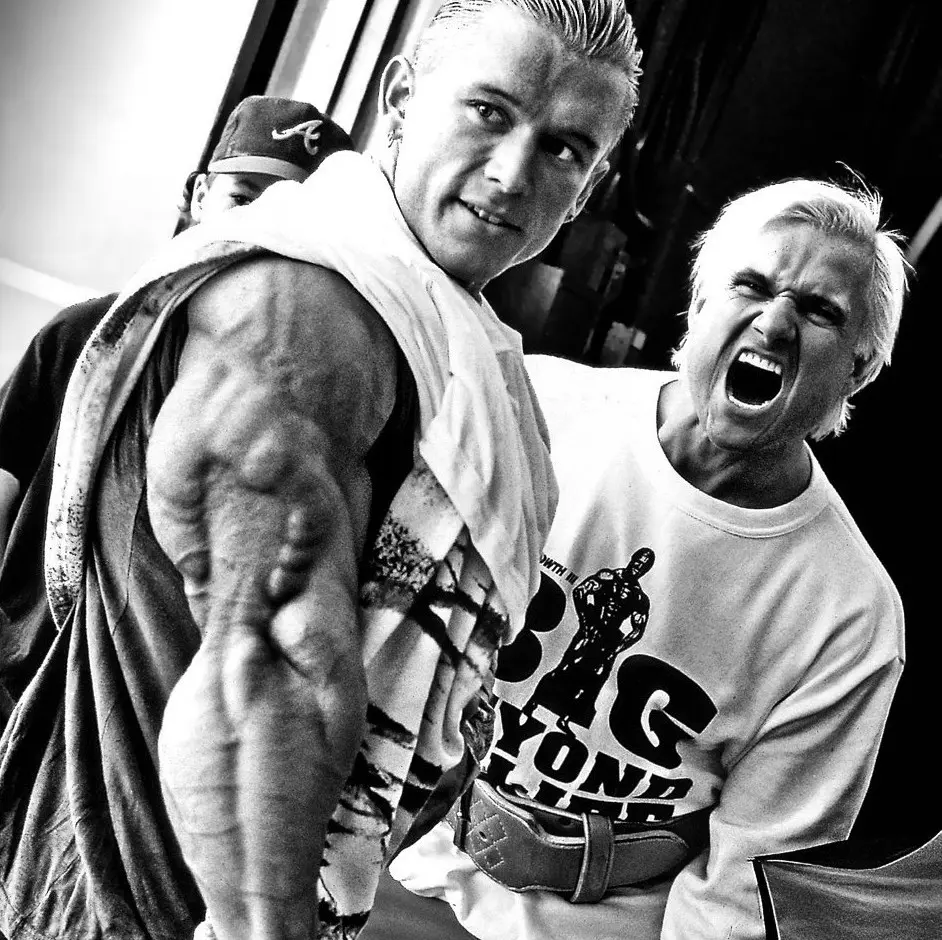
While the biceps might get all the glory, the triceps are no less important. In fact, the triceps brachii, to use this muscle’s full name, makes up two-thirds of your upper arm size. If you want “big guns,” make sure you give your triceps as much attention as your biceps.
1– Skull Crushers
Also known as supine triceps extensions, this exercise is a superior exercise for building mass. It can be a little hard on the elbows, so avoid going too heavy if you have a history of joint problems.
How to do it:
- Lie on your back and hold a barbell or an EZ bar with shoulder-width, overhand grip. Press the bar up and hold it over your chest.
- Without moving your upper arms, bend your elbows and carefully lower the bar to your forehead. Go slow – or you’ll find out how this exercise got its name!
- Extend your arms and repeat.
- For safety, this exercise is best done with a spotter nearby. You can also do skull crushers with dumbbells.
2– Close Grip Bench Press
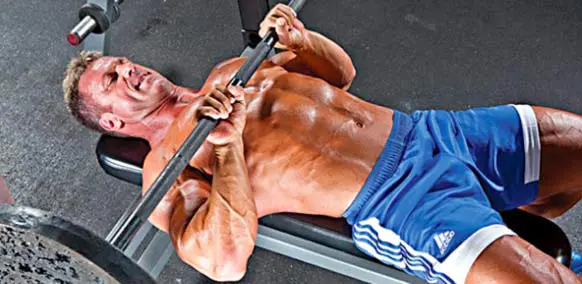
While regular and wide-grip bench presses are great for building your pecs, using a narrower grip really hits your triceps. Use this compound exercise to build size and strength in your triceps.
How to do it:
- Lie on the bench, so your eyes are directly below the bar. Reach up and grab it with an overhand, slightly narrower than shoulder-width grip. Plant your feet firmly on the floor, arch your lower back slightly, and lift your chest up toward the bar. Pull your shoulders down and back and brace your abs.
- Unrack the bar and hold it over your chest. Bend your arms and lower the bar down until it lightly touches your sternum. Do not bounce! Keep your elbows tucked into your sides.
- Press the bar back up and repeat.
3– Parallel Bar Dips
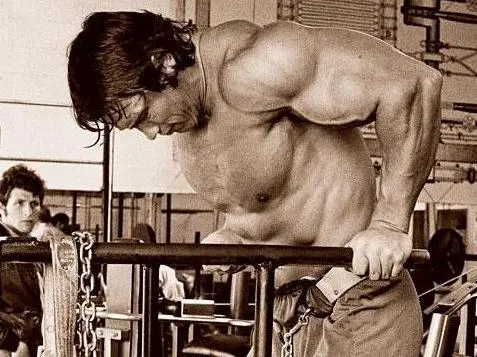
This old-school bodyweight chest exercise is also an effective move for bigger triceps. It can be hard on your shoulders, so avoid this exercise if you have a history of joint problems. Also, to prevent any future issues, do not descend too deep, as doing so puts a lot of additional stress on the shoulder joint.
How to do it:
- Place your hands on the parallel bars, so your thumbs are pointing forward. Support your weight on straight arms. Bend your legs to keep your feet out of the way.
- Maintaining a fairly upright torso, bend your elbows and descend until your upper arms are roughly parallel to the floor.
- Push yourself back up again and repeat.
Forearms
In the same way that your calves are important for crowning your leg development, big forearms add a lot of your arm development. Some people are naturally gifted with big forearms, but the rest of us need to work at it! Here are three of the best exercises for pumping up your lower arms.
1– Reverse Curls
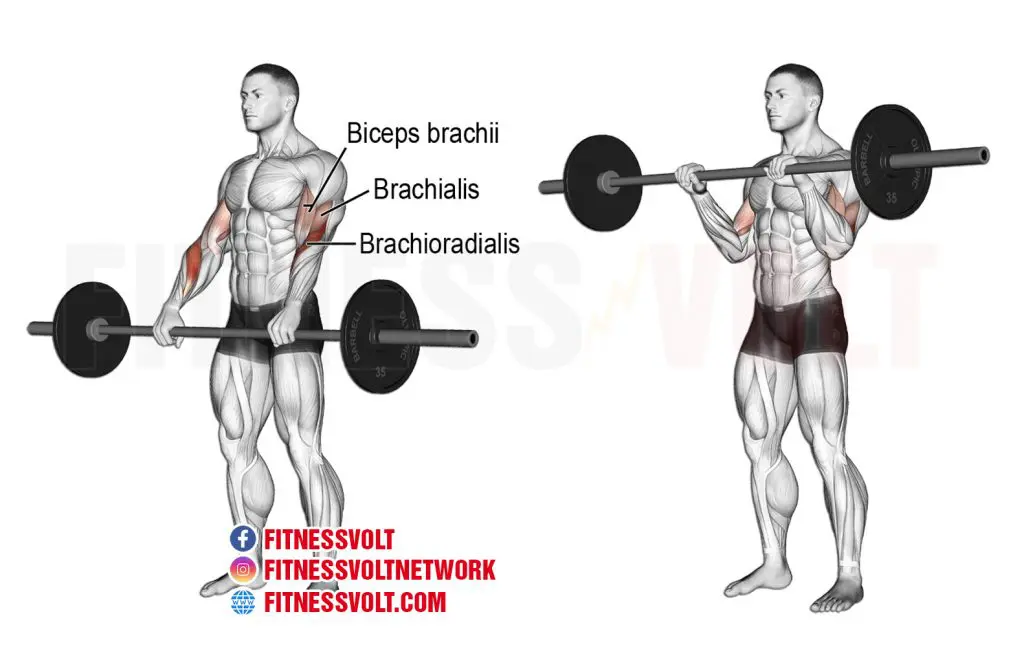
Working your biceps and your forearms together, this exercise is a genuine arm-building twofer! It’s also an excellent way to strengthen your grip. Use a thick bar to make it even more demanding and effective.
How to do it:
- Hold a barbell with an overhand, shoulder to hip-width grip. Stand with your feet shoulder-width apart for balance.
- With your upper arms close to your sides, bend your elbows and curl the weight up to your shoulders.
- Lower the bar back to your legs and repeat.
2– Hammer Curls
This is another part biceps and part forearm exercise. Don’t let that put you off; if you are serious about building your lower arms, this exercise will definitely help.
How to do it:
- Seated or standing, hold a dumbbell in each hand with your arms by your sides, and your palms turned inward.
- Keeping your upper arms as stationary as possible, bend your arms and curl the weights up to your shoulders. Do not rotate your wrists.
- Lower the weights and repeat.
- You can also do this exercise using an alternating arm action.
3– Farmer’s Walk
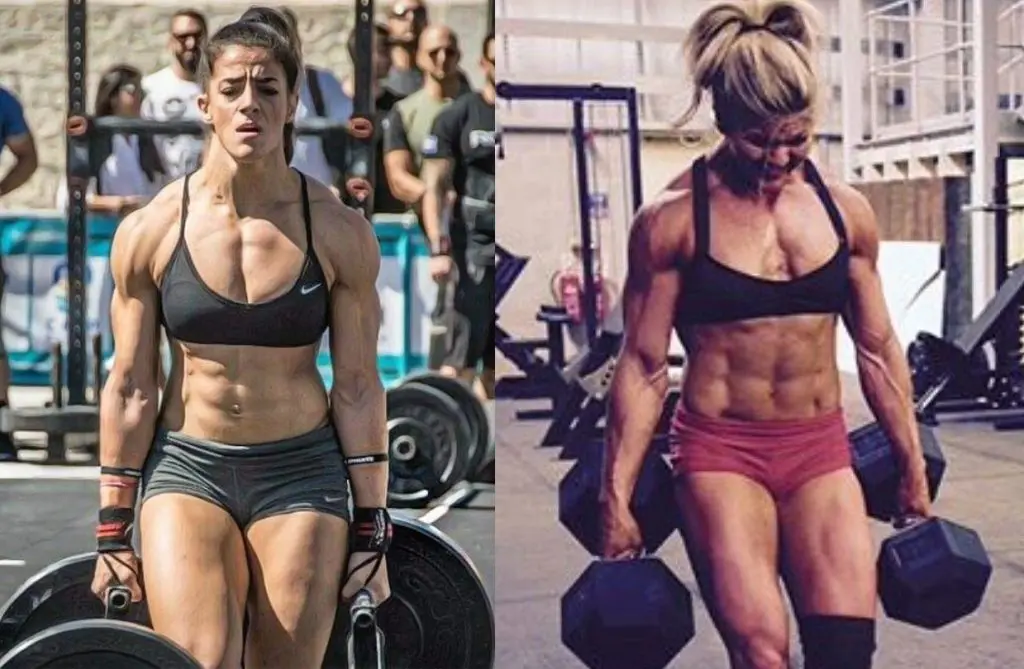
The farmer’s walk is a popular strongman event, as well as a superb forearm and grip exercise. And, if you do it with just one hand, it will strengthen your core too.
How to do it:
- Pick up and hold a dumbbell in each hand, with your palms facing your legs.
- Keeping your arms straight and your shoulders down and back, go for a walk around your training area. Continue until you feel your grip starting to fail.
- Put the weights down, rest a moment, and repeat.
Core
If you want washboard abs and a ripped waist, you need to pay as much attention to your diet as you do your training. The core, the collective term for the muscles that make up your midsection, is a complex muscle group that is capable of several different movements. Because of this, it’s pretty much impossible to identify just three best exercises.
So, to that end, we’re going to give you one each for spinal flexion, lateral flexion, and rotation, which are arguably the most important movements.
1– Hanging Knee Raises
Crunches are fine for working your abs, but if you can do more than 20 or so, they’re no longer intense enough to strengthen the target muscles. Lifting your legs is much harder than lifting your head and shoulders off the ground, making this a better exercise for sculpting a six-pack.
How to do it:
- Hang from an overhead bar with an overhand, shoulder-width grip. Keep your arms straight, and your shoulders pulled down and back.
- Without kicking or swinging your legs, bend your knee, flex your hips, and pull your knees up and into your chest. Make sure you finish the movement by tucking your pelvis up toward your shoulders.
- Slowly lower your legs and repeat.
2– Saxon Side Bends
This core exercise works your obliques, rectus abdominus, and even your erector spinae or lower back muscles. It’s tough, but that’s what makes it so darn effective.
How to do it:
- With a dumbbell in each hand, stand with your feet shoulder-width apart for balance. Press the weights up and overhead. Bend your knees slightly.
- Without twisting your hips or shoulders, lean over to the left and then to the right. Keep your core braced throughout.
- You can also do this exercise with a medicine ball or a barbell instead of dumbbells.
3– Cable Wood-Choppers
Cable woodchoppers target your oblique or waist muscles. They involve rotation, which is a movement pattern that doesn’t feature in many abs exercises. Do this exercise for a cut waist!
How to do it:
- Set the cable on an adjustable pulley machine to about head-height. Attached a D-shaped handle. Stand sideways on and hold the handle in both hands. Step away from the pulley machine to tension the cable. Stand with your feet about shoulder-width apart, and knees slightly bent for balance.
- Without bending your arms, rotate your upper body, taking your hands down toward hip-height. Keep your legs and feet stationary.
- Return to the starting position and repeat. Do the same number of reps on each side.
Wrapping up
Now, we’re not saying these are the ONLY exercises you should do to build muscle and strength, but if you MOSTLY do these exercises, you’ll make great progress. So, let’s say you should use these exercises 80% of the time as, rep for rep, they’ll give you the biggest bang for your training buck.
Supplement these moves with a few additional exercises of your choice to add a little extra variety to your workouts.
They might be basic, but these exercises have stood the test of time. Stronger, bigger people than you have used them to great effect. They worked for them and, if you train hard, they’ll definitely work for you too.

